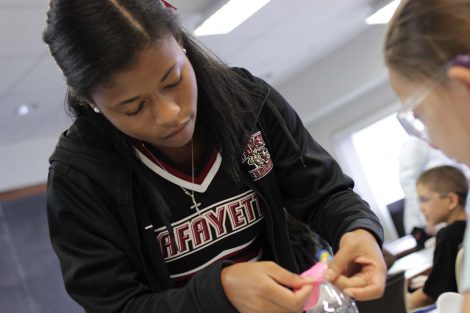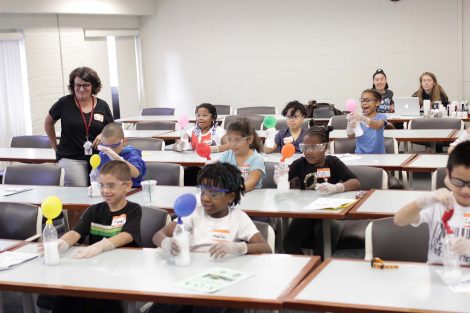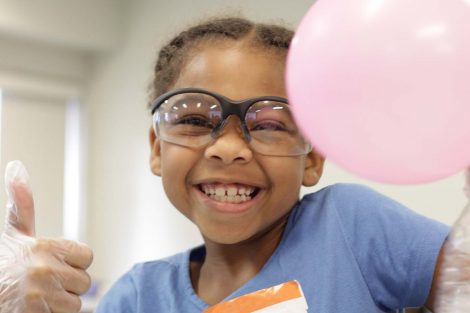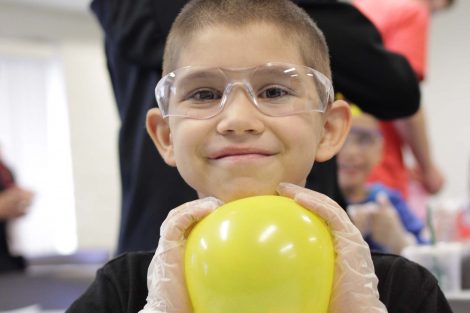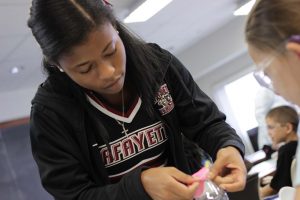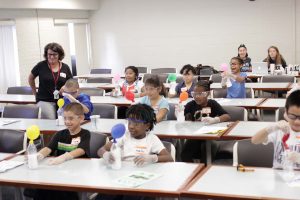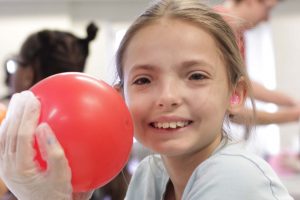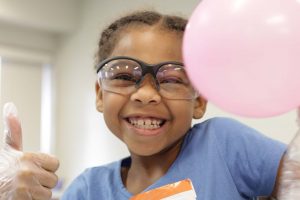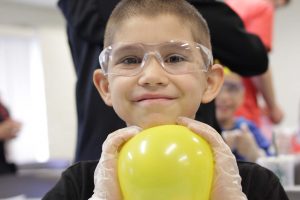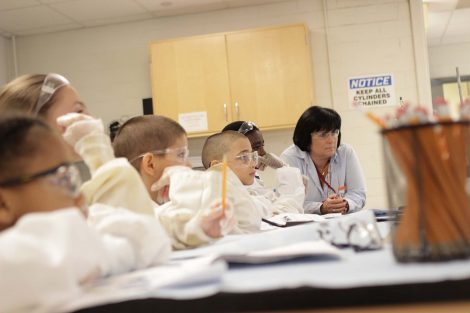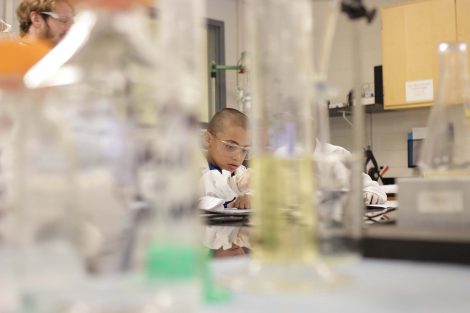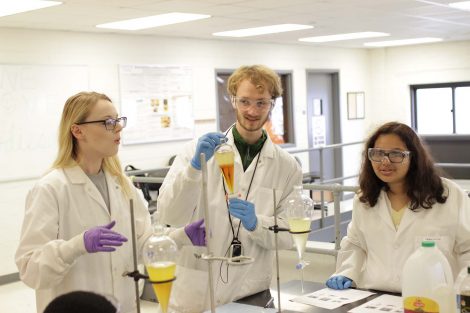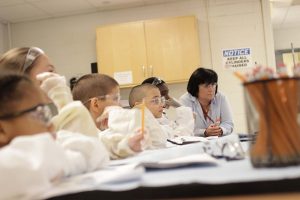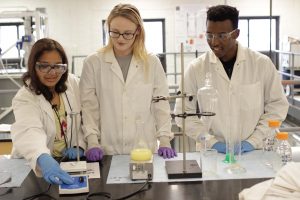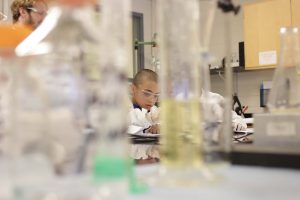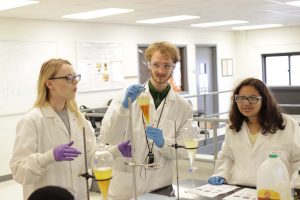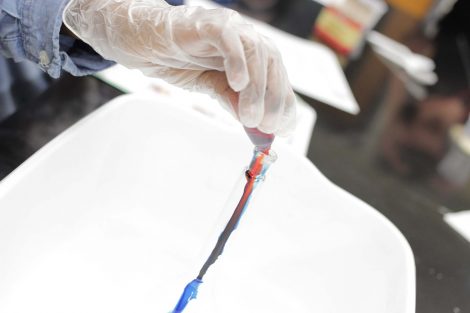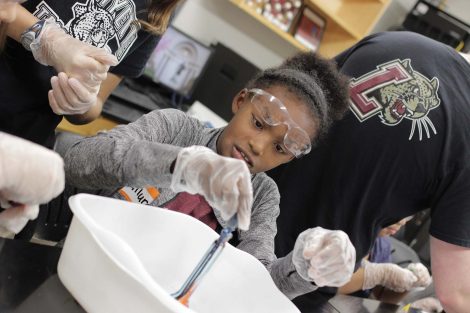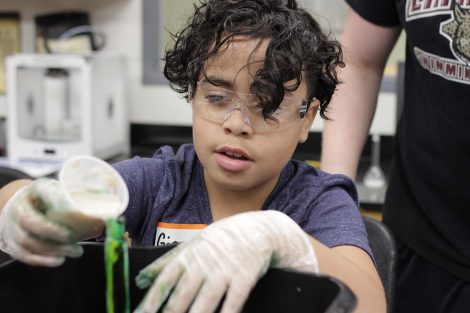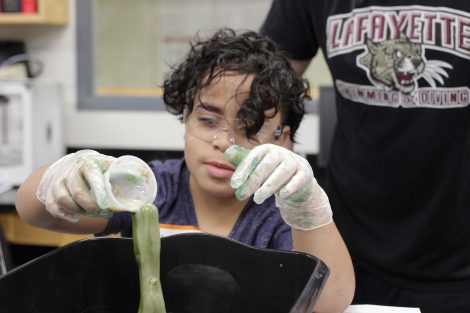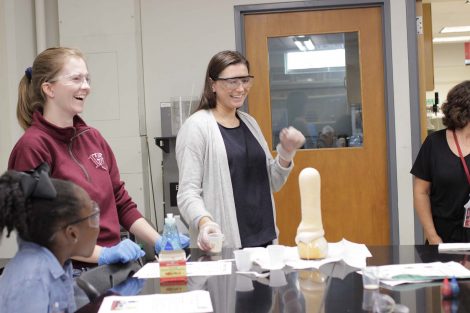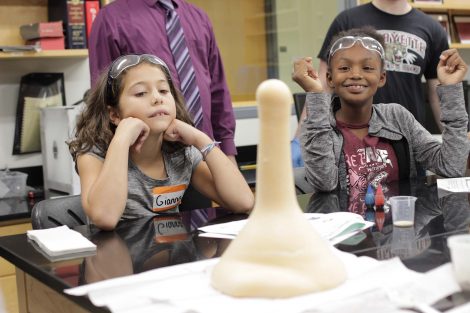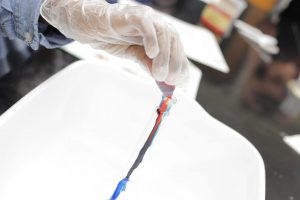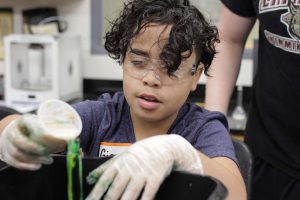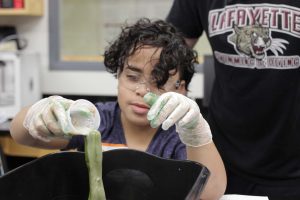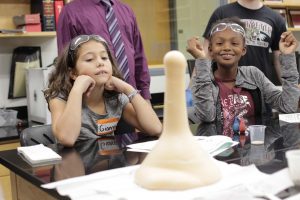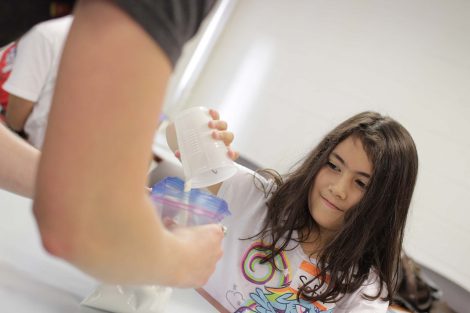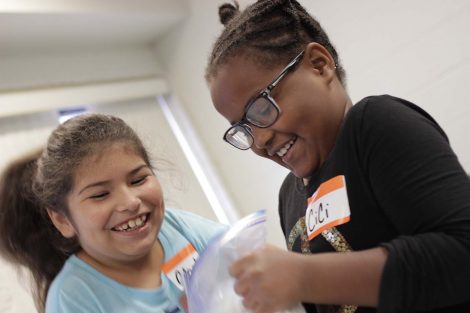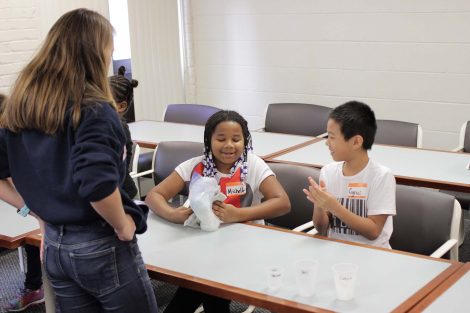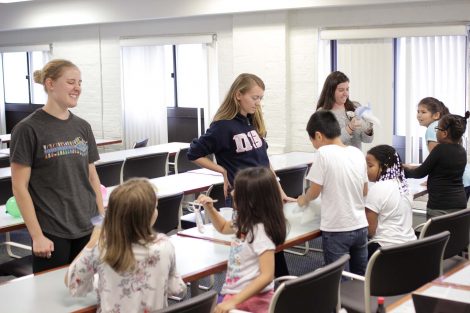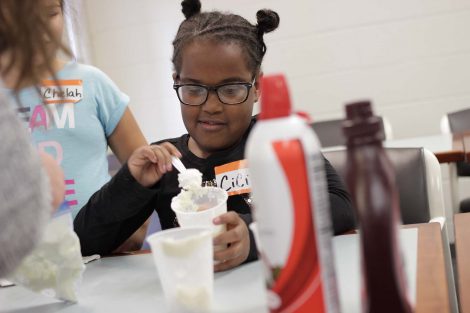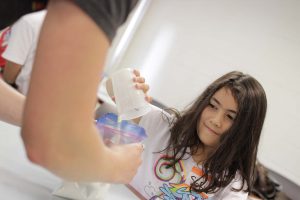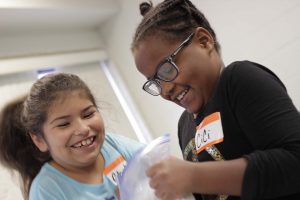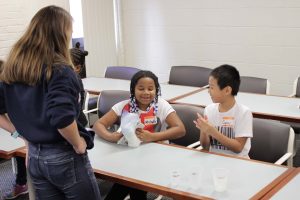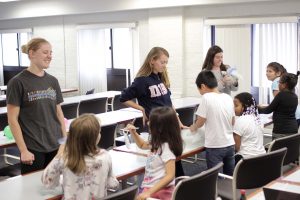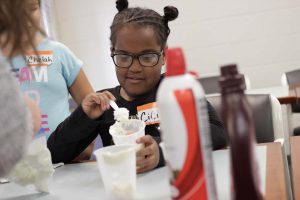Photos and story by Stephen Wilson
Elephants go through six sets of teeth in their lifetime, and each new set comes in larger than the last.
Maybe they’d hold onto those teeth longer if they had toothpaste, but imagine how much it would take to brush their brick-sized chompers?
Cheston Elementary third-graders not only imagined it but also made elephant “toothpaste” when they joined chemical engineering students and Michael Senra, assistant professor of chemical and biomolecular engineering, for a day of bonding, both literally and figuratively.
Those bonds began with some vinegar and baking soda.
After a brief lesson on chemical engineering, students began their first experiment: water bottles filled with a splash of vinegar and topped with a balloon holding baking soda. Together, elementary school students picked up their limp balloons as the contents fell into the vinegar.
Reactions came in layers. The soda/vinegar bubbled and churned. Balloons inflated with the production of carbon dioxide. Students’ eyes lit up. And the student instructors beamed with excitement.
Seniors in the 400-level class removed and tied the balloons and floated them to the young guests as souvenirs from their day. While fun was one goal, other goals floated higher.
“Lessons like today’s help our students take ideas they have learned and that are visible all around us in the world and expose younger minds to those ideas, so they, in turn, can see their world in a whole new way,” says Senra. “Such exposure can inspire young minds to pursue education and careers in fields they may never have considered before.”
That was made clear in the biofuels group. Donning white lab coats, goggles, and gloves, third-graders watched college students mix oil with methanol to allow for the creation of biodiesel and separate the biodiesel from other components present in the mixture. Leading the group were women and students of color.
“It is important for young people to get exposed to the lab and see all the cool things here,” says Annika Fisk ’19. “As women in STEM, it’s important to show women in the lab—that we are succeeding here. Only then will young women know that they can do this if it is what they want to do.”
And as eco-conscious students, they were excited to talk about alternative energy.
“Not many young people know about biodiesel since it is in its preliminary stages,” says Nahin Ferdousi ’19. “It’s exciting to show these kids that it is a real thing that can power real stuff in the world.”
The lessons are part of the Aspirations program from Landis Center for Community Engagement where Lafayette faculty, Cheston teachers, and both Lafayette and Cheston students work together through cooperatively developed classroom-oriented learning.
Cheston Elementary third-grade teacher Deirdre Dugdale appreciated a full day of science experiments.
“It’s so important to open their minds to what else is out there,” she says. “Cheston is all they know. Oftentimes their parents and grandparents went there. So today the kids could see a world bigger than their own. They saw the College, the football field where Easton plays Philipsburg, different people from different cultures, women in lab coats, so many things that will stay with them.”
“On days like this, all the kids feel equal,” Dugdale says. “The high, middle, and low performers are all engaged, asking questions, having fun, and finding success.”
Success often needs a catalyst, not an easy thing for third-graders to grasp … until you find the right metaphor. Students in the elephant toothpaste module had to find that comparison to define the concept and demonstrate the idea,
Imagine a bicycle, they said. It accelerates your pace, so you can get to school faster on it than if you walked.
Lights go off.
With their toothpaste, hydrogen peroxide is the catalyst making the yeast, dish soap, and food coloring blossom into a colorful foam.
“Alumni often tell me that one of the traits that set Lafayette engineers apart from others is their ability to communicate—how they can address a room of chemical engineers or, in this case, a group of third-graders,” says Senra. “Days like this give our students a chance to discuss chemical reactions in less complex ways.”
To cap off the point, student teachers use a higher concentration of hydrogen peroxide to really make the reaction take off, covering a flask in orange foam.
But there is no better catalyst for remembering a day like today than a bowl of ice cream.
Cooking is one of the most common applications of chemistry and chemical engineering that people use every day. So the biggest smiles came as a little cream and sugar surrounded by ice and salt made a delicious soft-serve ice cream when shaken vigorously to some fun music.
“My students loved doing this,” says Senra. “As seniors, they are taking classes, conducting research, looking for jobs, and applying to graduate school. Today helped calm that storm and boost morale in a hectic time.”
The bonds made over learning, friendships, and fun are even sweeter when you add some chocolate syrup and whipped cream.
